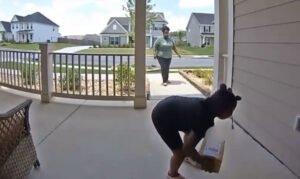Surprise: Thieves target vehicle with military, hunting or gun supporter sticker or decal on it —
The Fayette County Sheriff’s Office has released an analysis of entering auto incidents that occurred during 2018. While the number of vehicle break-ins fluctuates yearly, 2018 came with the highest number since 2014.
“We’ve seen a big increase in entering autos over 2017,” said Babb of the data from 2018, which had the lowest number of entering autos since 2014.
The numbers provided by the sheriff’s office bear that comment out. Reviewing the past several years, the data showed 160 incidents in 2014, 94 in 2015, 104 in 2016, 83 in 2017 and 193 in 2018.
Data on entering autos also shows the type location where the cime occurred. Of all entering autos, 80 percent occurred in a residential driveway, while 15 percent occurred in commercial or office parking lots, 3 percent in garages and 2 percent on a street.
In terms of the most targeted items stolen in 2018, there were 32 firearms stolen, 32 ID fraud items stolen, 24 electronics, 11 with cash stolen and four with tools stolen.
Babb said stolen firearms present a real problem.
“We want to get the word out that people need to secure their vehicles and not leave a firearm in it,” Babb said. “I’m amazed at the number of unlocked vehicles with firearms inside.”
Referencing an affiliated issue which might come as a surprise to some, Babb said it appears that some of the vehicles with guns stolen, especially with forced entries, had some form of decal on the vehicle noting that the owner is, or was, involved with the military, is a supporter of the law enforcement Thin Blue Line or is a hunting advocate.
Babb said the arrest percentage of those breaking-in vehicles in 2018 was 61 percent. But there is more to the story.
“We often know that some of those we catch and charge are responsible for other entering autos, but we can only charge a person for what we can prove,” he said.
Additional data from 2018 showed more vehicles entered on weekdays, especially Tuesdays, Wednesdays and Thursdays. The fewest entering autos came on Saturdays and Sundays.
And in terms of the type of vehicles entered, passenger cars topped the list, followed by trucks, SUVs, vans and RVs.
One of the variables that run-up the entering auto statistics deals with cases that are reported in Fayette County but often occurred elsewhere, Babb said. Citing an example, Babb said the vehicle owner finds a weapon missing but does not know when the theft occurred. Meantime, that vehicle has been in other parts of metro Atlanta.
Commenting on the justice system and jail sentences, Babb said the court system sees those convicted of entering autos as non-violent offenders, who sometimes get an early release and quickly return to their former habit.
“We had one case here where the guy in 2014 was out in six months on a 5-year sentence, even though he committed more than 30 entering autos. He returned to breaking in cars and was arrested in another jurisdiction,” Babb explained.
In a similar way, Babb said a group of juveniles from Clayton County broke into a number of vehicles in Fayette. They were released and resumed breaking into vehicles in Clayton within three weeks.
A breakdown of the 193 entering auto incidents during 2018 was done by zone, the same way the sheriff’s address all crimes. Doing so is one way Babb’s office uses to allocate resources.
The breakdown showed:
• Zone 1 – northwest Fayette – 30 incidents
• Zone 2 – north central Fayette – 58 incidents
• Zone 3 – northeast Fayette – 32 incidents
• Zone 4 – central and southwest Fayette – 32 incidents
• Zone 5 – central and southeast Fayette – 41 incidents













Leave a Comment
You must be logged in to post a comment.